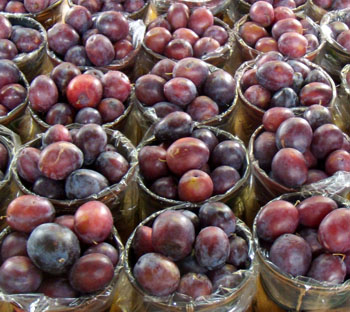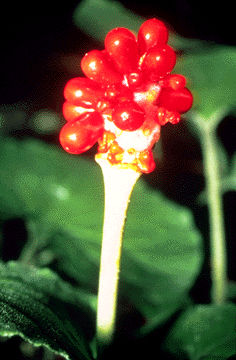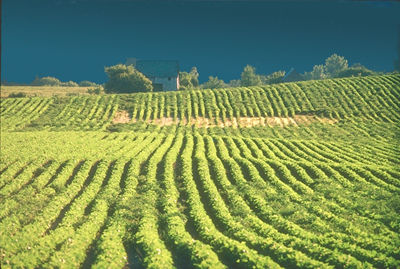Browse "Nature & Geography"
-
Article
Traditional Plants and Indigenous Peoples in Canada
Indigenous peoples in what is now Canada collectively used over a 1,000 different plants for food, medicine, materials, and in cultural rituals and mythology. Many of these species, ranging from algae to conifers and flowering plants, remain important to Indigenous communities today. This knowledge of plants and their uses has allowed Indigenous peoples to thrive in Canada’s diverse environments. Many traditional uses of plants have evolved to be used in modern life by Indigenous and non-Indigenous peoples alike. (See also Indigenous Peoples’ Medicine in Canada.)
"https://d2ttikhf7xbzbs.cloudfront.net/media/new_article_images/WildBerries/9342749963_6006fba520_z.jpg" // resources/views/front/categories/view.blade.php
https://d2ttikhf7xbzbs.cloudfront.net/media/new_article_images/WildBerries/9342749963_6006fba520_z.jpg
-
Article
Platinum
Platinum (Pt) is the best known of the 6 greyish-white, metallic, platinum group elements, which also include palladium (Pd), iridium (Ir), rhodium (Rh), osmium (Os) and ruthenium (Ru). Platinum and palladium are more commonly used than the other elements in the group.
"https://development.thecanadianencyclopedia.ca/images/tce_placeholder.jpg?v=e9dca980c9bdb3aa11e832e7ea94f5d9" // resources/views/front/categories/view.blade.php
https://development.thecanadianencyclopedia.ca/images/tce_placeholder.jpg?v=e9dca980c9bdb3aa11e832e7ea94f5d9
-
Article
Plover
Plover is the common name for a family (Charadriidae) of shorebirds with 2 subfamilies: Charadriinae, including true plovers; and Vanellinae, including lapwings.
"https://d2ttikhf7xbzbs.cloudfront.net/media/media/54ed14de-ebc8-46ba-80f7-c4f5bbef4130.jpg" // resources/views/front/categories/view.blade.php
https://d2ttikhf7xbzbs.cloudfront.net/media/media/54ed14de-ebc8-46ba-80f7-c4f5bbef4130.jpg
-
Article
Plum
Plum is a common name for certain members of genus Prunus of the rose family, which produce a smooth-skinned, elliptical, heart-shaped, oblong, ovate or round fruit with a flat seed.
"https://d2ttikhf7xbzbs.cloudfront.net/media/media/a7b2bcfe-316e-4c50-b69e-69d4fc395472.jpg" // resources/views/front/categories/view.blade.php
https://d2ttikhf7xbzbs.cloudfront.net/media/media/a7b2bcfe-316e-4c50-b69e-69d4fc395472.jpg
-
Article
Pocket Gopher
Pocket Gopher (Geomyidae), family of medium-sized, solitary, nonhibernating, subterranean rodents.
"https://d2ttikhf7xbzbs.cloudfront.net/media/media/369f05da-3657-43ac-8d8f-51afdcb5fc9d.jpg" // resources/views/front/categories/view.blade.php
https://d2ttikhf7xbzbs.cloudfront.net/media/media/369f05da-3657-43ac-8d8f-51afdcb5fc9d.jpg
-
"https://d2ttikhf7xbzbs.cloudfront.net/media/media/bb3cae34-7af8-4118-acfb-e7bdd5f3128f.jpg" // resources/views/front/categories/view.blade.php
https://d2ttikhf7xbzbs.cloudfront.net/media/media/bb3cae34-7af8-4118-acfb-e7bdd5f3128f.jpg
-
Article
Poison Ivy
Poison ivy is the common name collectively referring to a small genus (Toxicodendron) of woody perennial plants of the cashew family (Anacardiaceae). Poison ivy is closely related to and sometimes classified with the Sumacs in the genus Rhus.
"https://development.thecanadianencyclopedia.ca/images/tce_placeholder.jpg?v=e9dca980c9bdb3aa11e832e7ea94f5d9" // resources/views/front/categories/view.blade.php
https://development.thecanadianencyclopedia.ca/images/tce_placeholder.jpg?v=e9dca980c9bdb3aa11e832e7ea94f5d9
-
Article
Poisonous Plants
Toxic PropertiesToxic reactions generally are caused by chemical compounds that are produced by plants or absorbed from soil. These compounds produce undesirable physiological responses in individuals or animals.
"https://d2ttikhf7xbzbs.cloudfront.net/media/media/3118a894-b3ac-4aea-92be-4e8966b78166.jpg" // resources/views/front/categories/view.blade.php
https://d2ttikhf7xbzbs.cloudfront.net/media/media/3118a894-b3ac-4aea-92be-4e8966b78166.jpg
-
Article
Polar Bear
The polar bear (Ursus maritimus) is the largest living species of bear. They are found throughout the circumpolar Arctic. In Canada, this means polar bears live in parts of the Yukon, the Northwest Territories, Nunavut, Manitoba,Ontario, Quebec and Newfoundland and Labrador. Polar bears are both culturally and economically significant to the Inuit. As climate change continues to reduce their sea ice habitat, polar bears are increasingly threatened.
"https://d2ttikhf7xbzbs.cloudfront.net/media/media/7567797a-10ef-4939-9b3f-818ad7f357fa.jpg" // resources/views/front/categories/view.blade.php
https://d2ttikhf7xbzbs.cloudfront.net/media/media/7567797a-10ef-4939-9b3f-818ad7f357fa.jpg
-
Article
Pondweed
Pondweed is a common name for members of the family Potamogetonaceae [Gk potamos, "river"], which consists of the genus Potamogeton.
"https://development.thecanadianencyclopedia.ca/images/tce_placeholder.jpg?v=e9dca980c9bdb3aa11e832e7ea94f5d9" // resources/views/front/categories/view.blade.php
https://development.thecanadianencyclopedia.ca/images/tce_placeholder.jpg?v=e9dca980c9bdb3aa11e832e7ea94f5d9
-
Article
Poplar
The poplar is a short-lived, deciduous, hardwood tree of genus Populus of the willow family, widely distributed in the northern temperate zone.
"https://d2ttikhf7xbzbs.cloudfront.net/media/media/62bf6280-e044-4789-abc5-84a773ec839d.jpg" // resources/views/front/categories/view.blade.php
https://d2ttikhf7xbzbs.cloudfront.net/media/media/62bf6280-e044-4789-abc5-84a773ec839d.jpg
-
Article
Porcupine
Of the world's 23 species, only the North American porcupine (Erethizon dorsatum) occurs in Canada, throughout mainland forests and thickets.
"https://d2ttikhf7xbzbs.cloudfront.net/media/media/da303a47-692f-4260-89fe-f673d4ec5385.jpg" // resources/views/front/categories/view.blade.php
https://d2ttikhf7xbzbs.cloudfront.net/media/media/da303a47-692f-4260-89fe-f673d4ec5385.jpg
-
Article
Potash
Potash is an alkaline potassium compound most commonly used in fertilizers. It refers to a variety of salts produced through mining of minerals and chemical manufacturing. Canada is the world's largest potash producer and exporter (see Exports from Canada). The country’s potash industry is located in Saskatchewan.
"https://d2ttikhf7xbzbs.cloudfront.net/media/media/cd668309-705d-44b0-a404-7a6c5242db9b.jpg" // resources/views/front/categories/view.blade.php
https://d2ttikhf7xbzbs.cloudfront.net/media/media/cd668309-705d-44b0-a404-7a6c5242db9b.jpg
-
Article
Potato
The potato (Solanum tuberosum) is a herbaceous annual of the nightshade family, which produces tubers at the end of underground branches called stolons.
"https://d2ttikhf7xbzbs.cloudfront.net/media/media/7b83d57e-9794-41ff-99cc-34ba45f21bba.jpg" // resources/views/front/categories/view.blade.php
https://d2ttikhf7xbzbs.cloudfront.net/media/media/7b83d57e-9794-41ff-99cc-34ba45f21bba.jpg
-
Article
Potato Wart Disease
Potato wart disease, also called potato canker, is a fungal disease of potato sprouts, eyes and stolons. The disease is caused by the soil-borne fungus, Synchytrium endobioticum. Potato wart disease poses no danger to human health or food safety, but it can impact local economies as the disease can reduce yield and effect economic regulations, such as potato exports. (See also Agricultural Economics.)
"https://development.thecanadianencyclopedia.ca/images/tce_placeholder.jpg?v=e9dca980c9bdb3aa11e832e7ea94f5d9" // resources/views/front/categories/view.blade.php
https://development.thecanadianencyclopedia.ca/images/tce_placeholder.jpg?v=e9dca980c9bdb3aa11e832e7ea94f5d9
